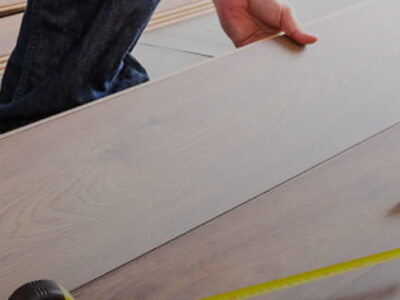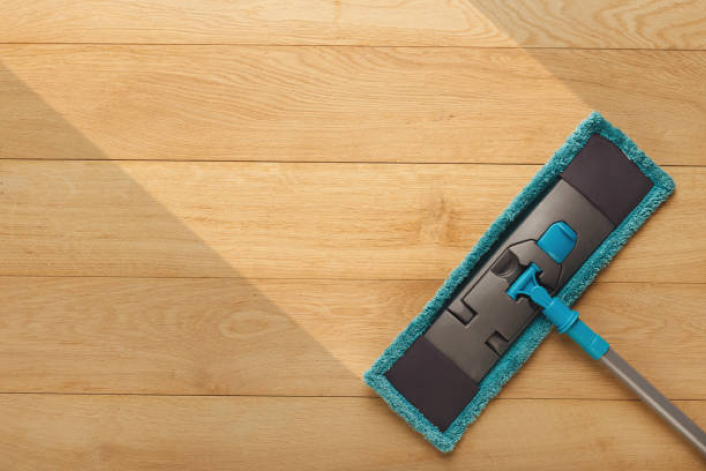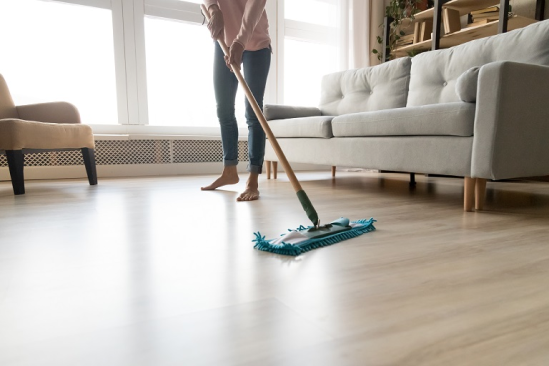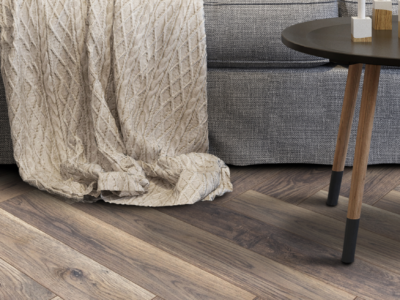
Technical Library
Caring for your floor
Supplied here is in depth information on how to clean and care for Oiled & UV cured wood flooring and also Lacquered wood flooring. There is also information on how to further protect your floors.
How to Clean Oiled & UV Cured Wood Flooring
Light Clean
When cleaning general dust and debris from your floor you should use a vacuum cleaner with a soft brush head. Vacuum cleaning the floor can be repeated as necessary.
For quick, light cleaning you can also use a Microfibre Flat Mop. This will remove most of the dust that will collect on the floor and is quick and easy. Always clean smooth or brushed floors along the length of the boards. If you do a ‘band sawn’ surface, clean in the direction of the saw marks to minimise snagging.
Nourishing clean
Must also be completed after installation of pre-finished oiled or cured wood flooring. If maintained properly, UV Cured boards should never require re-oiling. Before using a sponge mop for the first time, rinse the mop in hot water and squeeze until the water runs fully clear.
Once your floor starts to look a little dull, has marking or is soiled, then it’s time to give it a Nourishing Clean. You can do this as often as you like as the Blanchon Natural soap includes natural oils that replenish the floor. (Though it is not recommended to do this a lot in a short space of time as you may over-wet the boards).
This simple process should be followed to keep your floor looking clean and like new. By using the professional cleaning products we recommend, you can increase the longevity of your floor as you will be nourishing the wood with each clean.
Remember: White Natural Soap for white finished floors and Colourless for all other oil finished floors.
Step 1
Using a double bucket (or two single buckets), add at least 40ml of Blanchon Natural Soap (make sure to use the right colour) into one of the troughs/buckets. Then pour very hot water (not boiling but too hot for your hand) into both troughs ; this will result in one trough with the Natural Soap Solution and one with clean water for rinsing.
If the floor is heavily soiled and/or covers a large area, you will likely need to replace the water in both buckets several times during the clean. You can also use more soap to boost the sheen on the floor or increase the depth of clean.
Step 2
Make sure the sponge mop is clean (for first use you’ll need to rinse the sponge mop multiple times to ensure it’s clean) and then soak it in the bucket containing the Natural Soap & hot water solution. Stir it around and then squeeze as much water out as you can.
Step 3
Then clean the floor, ensuring to move the mop in the direction of the grain (along the length of the board). Regularly rinse the mop in the clean water trough and then repeat ‘step 2’. It is best to work in an area between 0.5-1m2 or less per rinse (depending on how dirty and dry the floor is). You’ll be able to tell how dirty the floor is by looking in the rinse trough after the first boards are cleaned.
For first-time-cleans in building sites do not do more than 0.5m2 before rinsing and soaking the mop in the natural soap solution.
Step 4
Allow the floor to dry before putting it into use, drying times are usually 20-60 minutes. Once dry, the floor can be put into full use.
How to Clean Lacquered Wood Flooring
Light Clean
For quick, light cleaning it is best to use the Microfibre Flat Mop. This will remove most of the dust that will collect on the floor and is quick and easy. You can also use a vacuum cleaner with a soft brush head. Always clean along the length of the boards, never across the width.
Do not use a vacuum with a rotating brush if it has support bar underneath, as this can leave marks and scratches on the floor.
Routine Clean
Once your floor starts to look a little dull, has markings or is soiled, then it’s time to give it a Routine Clean. You can do this as often as you like, as the Blanchon Lagoon Cleaner is a gentle but effective cleaning agent. (It is not recommended to do this a lot in a short space of time as you may over-wet the boards).
This simple process should be followed to keep your floor looking clean and like new. By using the professional cleaning products we supply, you can increase the longevity of your floor.
Step 1
Complete a ‘light clean’ as directed above. Then Shake the spray bottle of Blanchon Lagoon well before moving onto step 2 below.
Step 2
Using the Blanchon Lagoon, spray a small amount onto a small area of the floor (please note a 0.5L spray bottle can cover up to 200m2, so it can be used sparingly). Wipe the sprayed area with the Microfibre Flat Mop.
Step 3
Continue to clean the rest of the floor; working in small areas. If the floor is very dirty, it might be necessary to do several cleans.
Step 4
Allow the floor to dry before putting it into use, drying times are usually 10-15 minutes. Once dry, the floor can be put into full use.
Ensure the longevity of your floor
DO’s
- Use felt pads on the bottom of any furniture especially any coffee tables and chairs.
- Use breathable mats on entrance ways to capture any debris from outside
- Tend to spills quickly
- Consider using a protective breathable mat in kitchen areas where spillages are likely (i.e. oven, hob, sink)
- Clean your floor using recommended products (see pg.1). Do not use supermarket brands as they are not normally formulated for a UV oiled wood floor.
- Keep the floor temperature lower than 27 degrees centigrade (applicable for area with under floor heating)
- Cover the floor with cardboard taped together before any works are done (i.e. painting or plaster work)
- Remove water-based paint with warm water and a clean absorbent cloth (do not rub paint into wood)
- Gloss/oil-based paint spillages must be cleaned immediately with an absorbent cloth, do not rub the paint into the wood. Any oil-based gloss that has dried onto the surface should be remedied by a wood floor finishing specialist.
- Where possible use ‘soft’ water rather than ‘hard’ as hard water can leave residues from calcium and nitrates.
DONT’s
- Do not use bleach, spirit or other chemical cleaners on your floor
- Do not drag items across your floor
- Do not over-wet/soak your floor
- Do not over heat your floor (do not exceed 27 degree centigrade in areas with under floor heating)
- Do not spill hot oil/fats on to floor
- Do not clean the floor with just water
- Do not apply any lacquer or other water-based finishes/coatings to the floor
- Do not use vacuum cleaners with a fixed bar on the rotor brush as this can scratch the floor.
- Do not put tape/adhesive on the floor surface
EXPECT:
- The floor to react to high levels of sunlight. (i.e. if you move a mat or item of furniture from a place in direct sunlight, you may notice the surrounding floor being lighter than the area you’ve just uncovered. This is a natural reaction from the wood due to UV light. In time the newly exposed area will lighten to match.
- Scratches will appear if sharp or heavy items are dragged over the floor. Depending on the severity of the scratch the repair can be simple to complex. In the event of a scratch please contact us for guidance before attempting to rectify.
- The floor will expand and contract as temperatures and humidity change throughout the year.
- The floor may dull over time if not properly cared for, see the periodic maintenance steps on pg1 for the remedy “under nourishing clean”.
- Wood flooring will dent if pointed objects or unprotected high-heeled shoes are dropped or pushed on to the floor.
Join our mailing list
Receive the latest news, offers and inspiration straight to your inbox.



